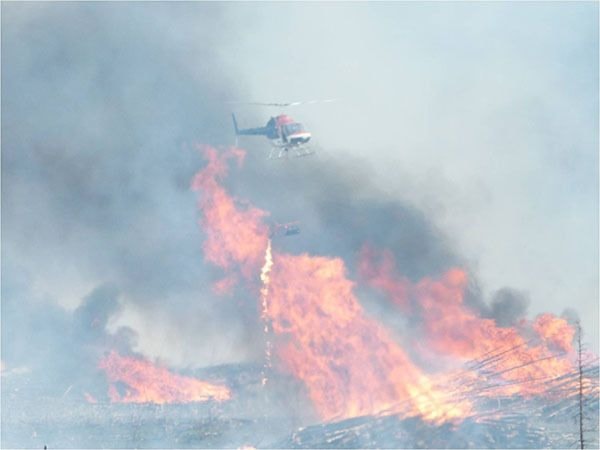In the summer of 2010, the Binta Lake forest fire south of Burns Lake saw 400 sq. kms of forest set a ablaze during an exceptionally dry and windy August.
Over a 12 hour period, the blaze grew from 7000 hectares to over 35,000 hectares, setting off evacuation orders and alerts in the region.
The fire, first discovered on July 28, 2010, was the dramatic highlight of a busy fire season that year. The Binta fire was only one of 79 fires in the Nadina fire zone in 2010. The drama surrounding a large fire can easily overshadow how successful fire prevention efforts in the region actually were. The Northwest fire zone had a 91 per cent initial attack success rate in 2010 - in the face of more than 250 fires.
Of the 79 fires in our local Nadina zone, only seven of those fires grew beyond four hectares.
But when one fire grows to 40,000 hectares, results in the evacuation of over 100 homes, brings in 150 additional firefighters from across B.C. and the country, and takes 284 firefighters and 96 pieces of heavy equipment more than a month to contain, a lot can be learned from the experience.
Staff and elected members of the Regional District of Bulkley Nechako (RDBN) took part in an education and awareness tour of the Binta fire area last month. The tour was led by Rob Krause, forest protection officer for the Northwest Fire Centre’s (NFC) Nadina zone, who was also in charge during the Binta fire in 2010.
A large rehabilitation effort continues years
after the suppression of the fire. Crews from the wildfire management branch have been at work in the burn area - setting more fires.
Proscribed burning last year in the area will be repeated this year as part of ongoing rehab efforts.
“This burning is conducted as part of a larger rehabilitation effort… including piling and burning fire-killed trees, tree planting and the deconstruction of fire guards constructed during the fire,” said Suzanne Pearce, information office with the NFC.
Despite the size of the fire, the damage to merchantable timber was not as extensive as it could have been had the fire erupted in a more productive part of the forest landbase. The area had been logged extensively back to the 1950s, and previous fires had already reduced the quality of the standing timber.
According to Carolyn Stevens, silviculture program manager for the Nadina Resource District, approximately 9700 hectares of the Timber Harvesting Landbase (THLB) in the Lakes Timber Supply Area (TSA) was lost to the fire.
That amounts to approximately 1.3 million cubic metres of harvestable timber up in smoke, which is about one year of annual allowable cut according to current harvest limits. Over the long term, this amounts to only one per cent of timber stock in the Lakes TSA on a 100-year rotation cycle.
Currently, the area is being replanted with a mixed species stock (pine, spruce, western larch, and Douglas fir). An initial concern, that soil in the area could have been damaged by the intense heat, turned out not to be an issue after soil experts were brought in to analyze it.
